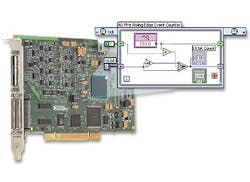Of the many trends impacting manufacturing, the one that has been having the biggest impact is customizability. Much of the focus on this trend has centered on the customer-demand aspects of customizability, which has led manufacturers to increasingly adopt two key traits: lower inventories and great production flexibility.
Lower inventories have long been a part of the manufacturing discussion—from just-in-time and lean to various supply chain strategies. On the flexibility front, strategies around line changeover times and techniques typically rule the conversation. But what about the controllers that drive the lines and the machines on them? That’s where FPGAs have really changed the discussion since the late 1990s.
While I don't foresee a time in the near term where fixed-function controllers will disappear, it does appear that the demand for them could begin to wane. After all, if you can get a controller that lets you adapt its function after deployment versus one that cannot be changed, that's not a difficult decision to make in many cases.
I’m currently working with National Instruments on a video series exploring various applications of FPGAs. You can see the first video here. For this first installment in the series, I spoke with Nate Holmes of National Instruments about motion control system architectures from a reconfigurable versus traditional perspective.
Holmes says that as long as you operate within the designed use case, fixed-function controllers and drives can “be a very effective choice for implementing an application because you can take advantage of all the design work and feature definition that went into that product, such as advanced filtering, auto-tuning, test panels and diagnostic tools.”
The problem with fixed-function controllers arises when you need to step outside the capabilities defined by the motion controller and drive firmware, Holmes says. When that happens, there are two alternatives: 1) custom design a motion controller or drive that delivers the exact behavior needed from the system (this option can be costly and time-consuming and has its own set of limitations); 2) combine the approaches of fixed functionality and custom design through the use of FPGAs.
“Combining a programmable real-time processor, programmable FPGA and modular I/O packaged into an off-the-shelf system adds much of the needed flexibility for building control and measurement systems,” Holmes says.
“The ability to reconfigure a standard framework, customizing where necessary but using the rest, is very useful for machine builders,” he adds. “In this type of software architecture, motion tasks are disaggregated so that you can choose where to run a particular task to meet the needs of the application. Furthermore, each task or block is open, that is, you can modify the functionality down to a very low level. Finally, machine control software packages should be constructed to be modular, such that specific tasks can be modified and customized without largely impacting other blocks in the system. This modular approach is, to a large extent, hardware agnostic, meaning that you can mix and match components to come up with the hardware system that meets your needs in terms of axis count, processing power, integration with other I/O subsystems, and level of customizability.”
As we progress through this video series, I’ll be incorporating some of the discussion into my blog on a regular basis. In an upcoming blog post, I’ll share Holmes’ thoughts on why some of the technologies needed by today’s high-performance machine builders are not well met by fixed function controllers and drives.
About the Author
David Greenfield, editor in chief
Editor in Chief

Leaders relevant to this article:
